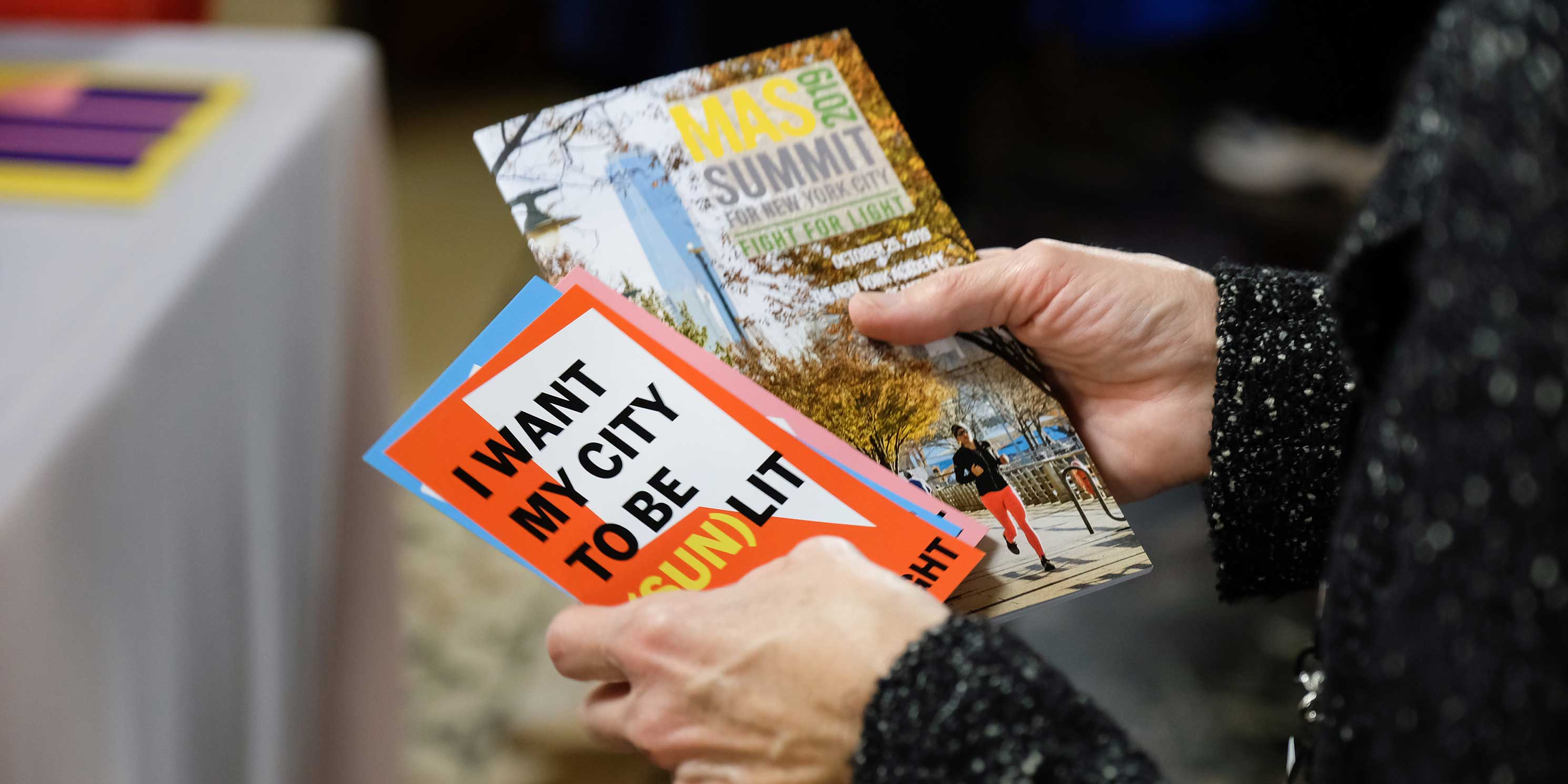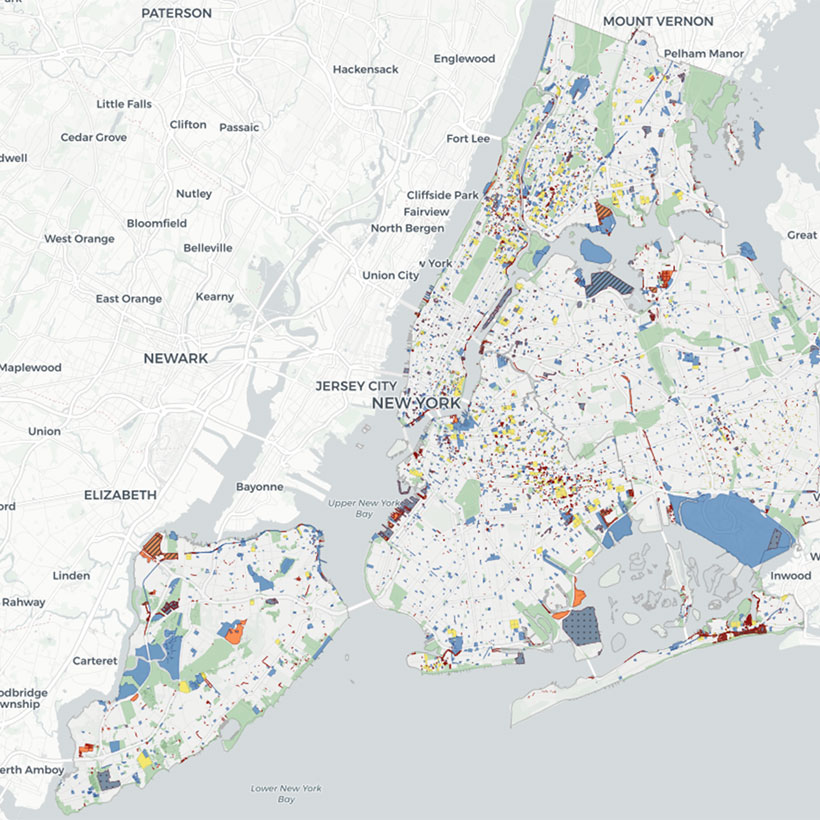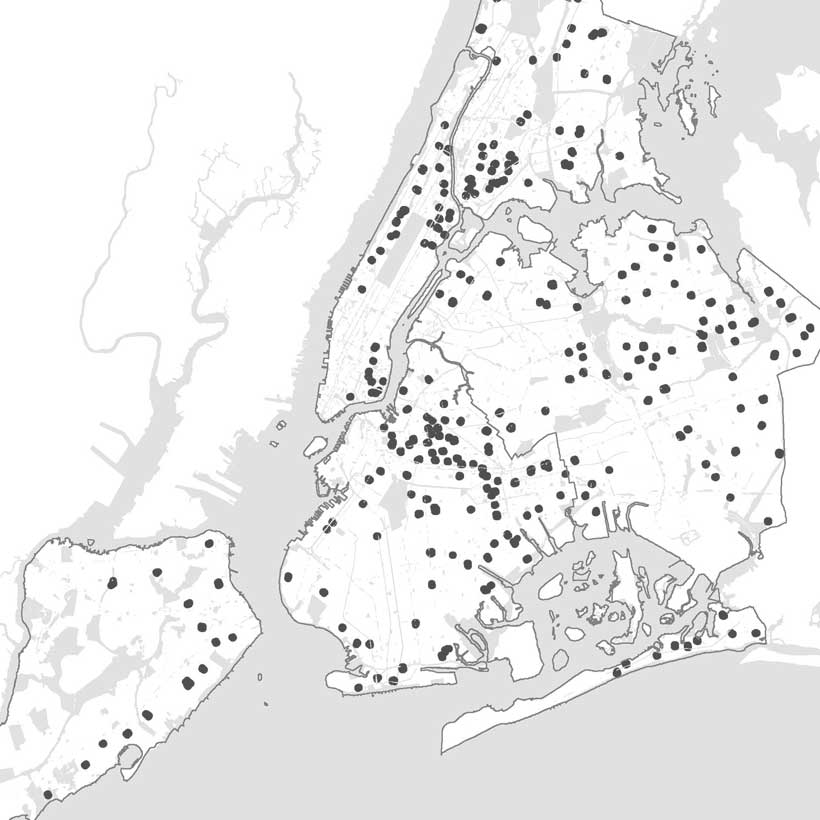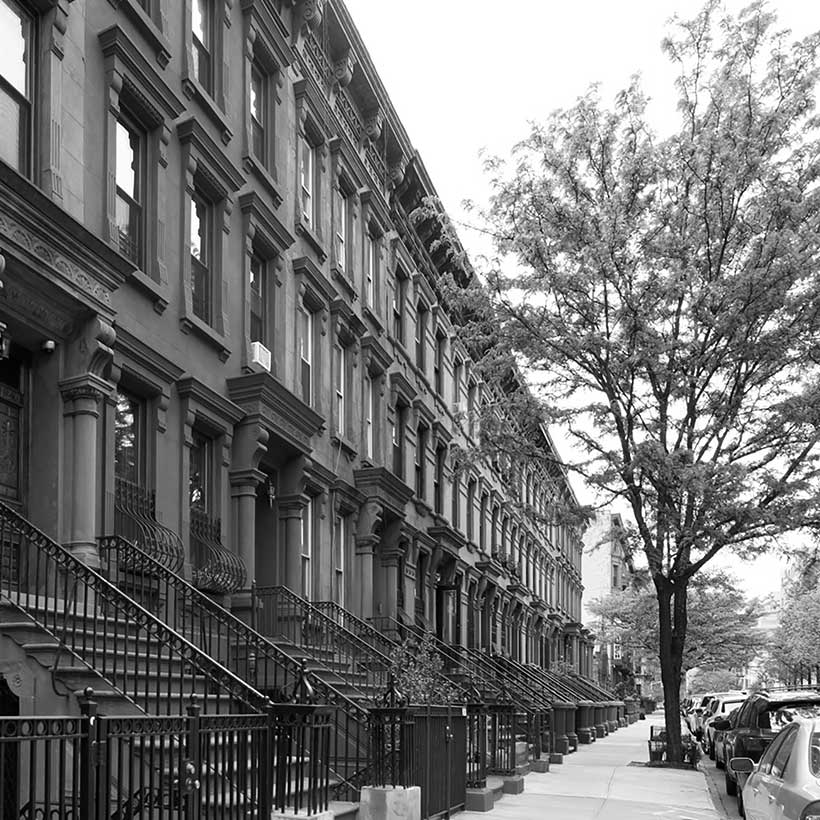Jointly Operated Playgrounds Are at Risk, Undermining Parks Equity
Testimony to the New York City Council Committee on Parks and Recreation
Position
The Municipal Art Society of New York (MAS) believes that Jointly Operated Playgrounds (JOPs) are crucial to the provision of quality and accessible parks and open space in the city, particularly in underserved neighborhoods. The City has consistently acknowledged the importance of playgrounds in achieving its long-term open space goals and improving park equity.
Contrary to these efforts, a recent development initiated and approved by the City at the Marx Brothers Playground in East Harlem, sets a dangerous precedent that may put JOPs at risk throughout the five boroughs. In response, MAS urges the City Council to uphold the City’s long-term vision, treating parks and open space as essential components of New York’s neighborhoods.
Download Testimony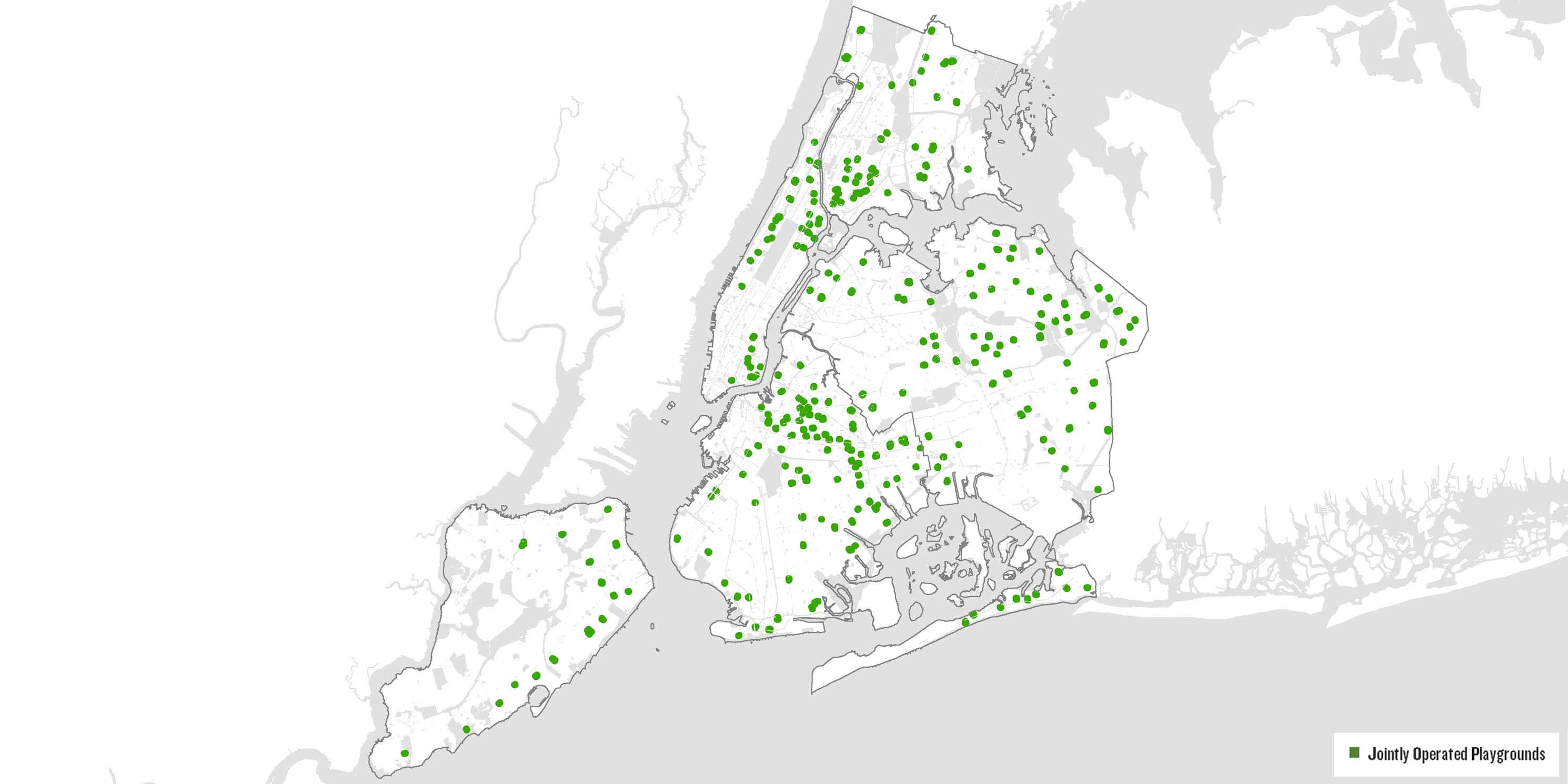
Community Parks Initiative
The Community Parks Initiative (CPI) is the City’s most important park equity program. According to the Department of Parks and Recreation (NYC Parks), the initiative is an investment in neighborhood parks with the greatest needs. Parks selected under the CPI program are in low-income, densely populated, and growing neighborhoods. These are the communities that need parks the most.
There are 853 parks totaling more than 2,500 acres within CPI zones. 116 of those parks are classified as JOPs, and provide 144.3 acres of open space and recreation opportunities (see Figure 1). About a dozen JOPs within the CPI zones receive capital funding under the program.
Based on the latest available census data and the parks properties dataset,1 the open space ratio-an indicator of the degree to which neighborhoods are served by open space-is 0.93 acres per 1,000 residents within the CPI zones. This is 38 percent below the city median of 1.5 acres per 1,000 residents and 63 percent below the City’s goal of 2.5 acres per 1,000 residents. Without JOPs, these neighborhoods would be further underserved by open space, which would have long-lasting adverse impacts on the quality of life for residents and widen the gap for the City to achieve its open space goals.
Citywide Policy
JOPs have figured prominently in the City’s open space policy and have been continuously identified as key infrastructure necessary to accomplish citywide and long-term open space goals. OneNYC identifies playgrounds as having an important role in creating neighborhoods that promote an active and healthy lifestyle. JOPs make an indispensable contribution to OneNYC’s objective of increasing the percentage of adults and high school students that meet recommended levels of physical activity.
Similarly, under the Schoolyards to Playgrounds Program, hundreds of schoolyards were renovated and opened to the public during non-school hours. According to the Trust for Public Land in association with its ParkServe campaign, this brought more than one quarter million more New Yorkers within a 10-minute walk of a park.
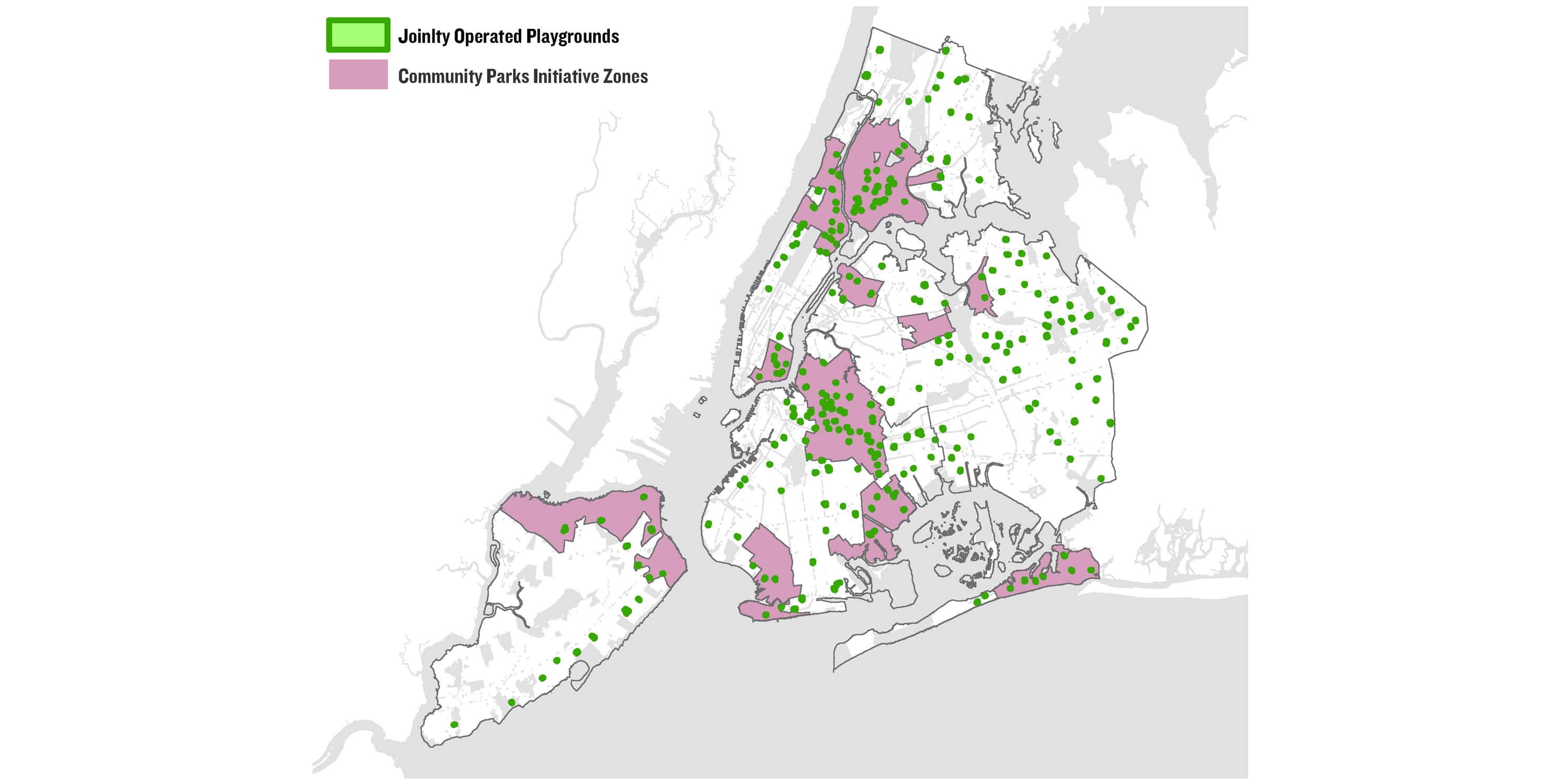
Negative Precedent
Contrary to its own stated open space policy goals, the Marx Brothers Playground development, initiated and approved by the City, has the potential to put many JOPs at risk. MAS, in partnership with several other prominent civic organizations, has filed a lawsuit to prevent the alienation of Marx Brothers Playground, a public park, and allowing a private developer to construct a 700-foot residential tower on the site.
The project sets a dangerous precedent with city-wide implications, putting 266 playgrounds across the five boroughs, including the 116 located in underserved neighborhoods, at risk of a similar fate.
MAS strongly believes that parks and open space are vital to livable neighborhoods. We urge the City Council to hold true to the City’s stated long-term vision and protect JOPs for the neighborhoods most in need of accessible and quality open space.
Notes
- American Community Survey 2016 Five year estimates for population and NYC Open Data Parks Properties (identifies City property under the jurisdiction of NYC Parks).
